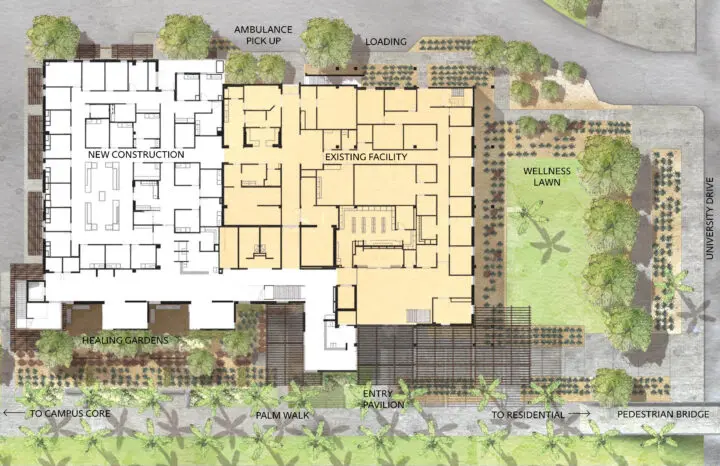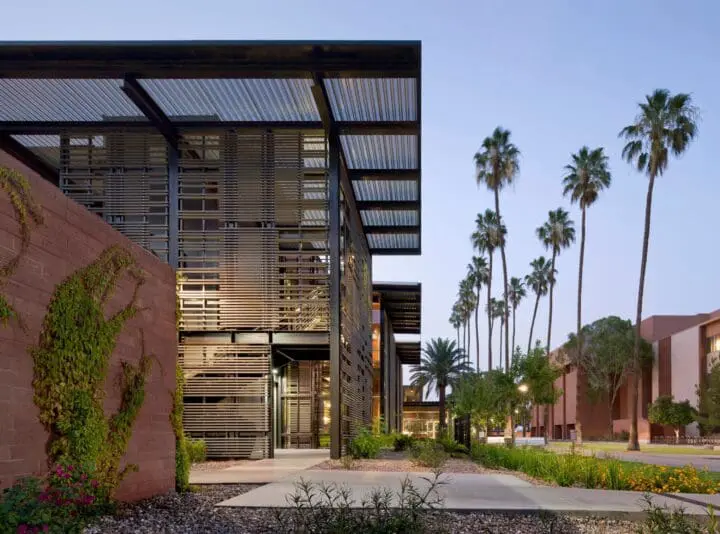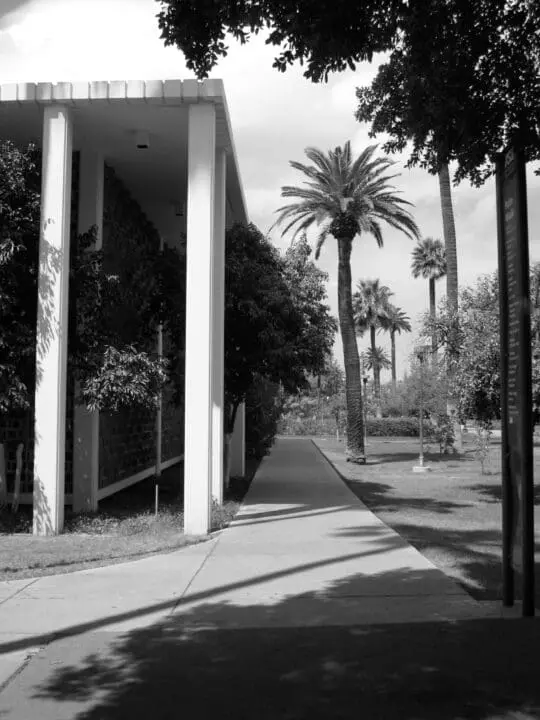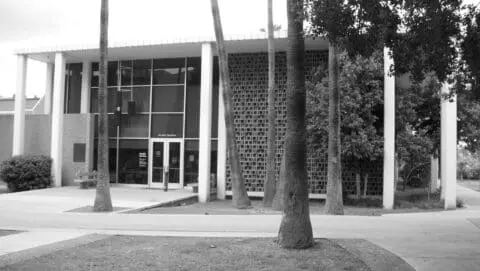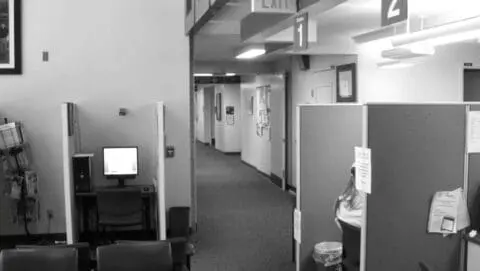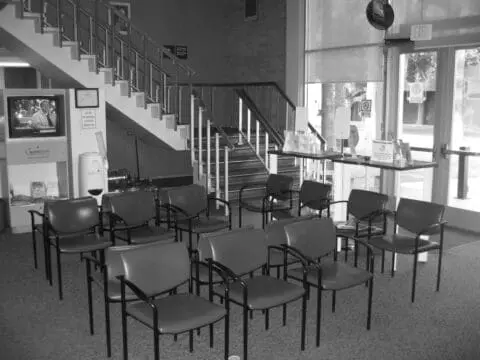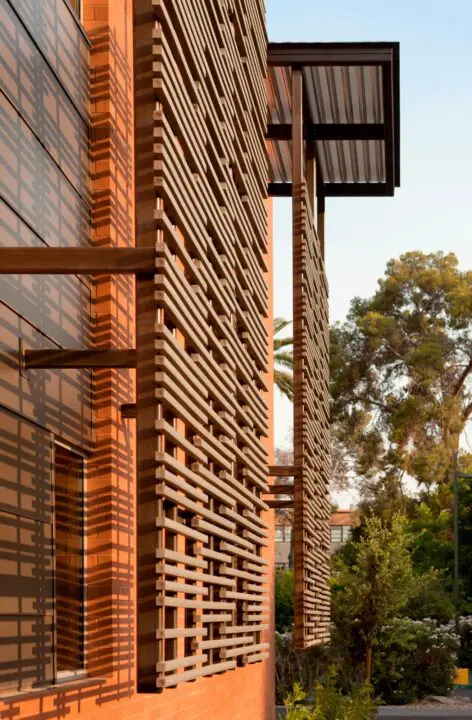
Arizona State University Health Services Building
This adaptive reuse project transformed an existing sterile and inefficient health clinic into a clearly organized and welcoming facility that contributes to a more cohesive pedestrian-oriented campus. The biophilic design fosters a sense of health and wellness that encourages the adoption of healthy lifestyles. The renovated facility, the new wing, and the entrance pavilion energize the surrounding campus by engaging the historic Palm Walk—the campus’s main pedestrian spine. 76% of the original structure was reused, and the building achieved a 73% reduction in EUI over the national baseline for higher education facilities.
In collaboration with Orcutt|Winslow.
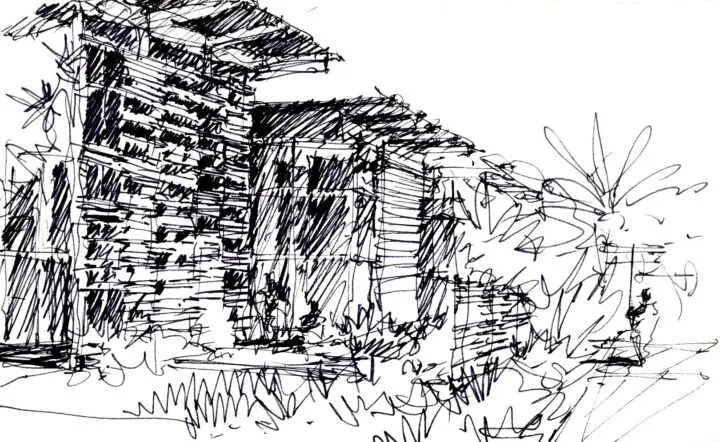
The project engages and activates the historic Palm Walk, the campus’s pedestrian main street. Whereas the disjointed existing building provided little order for the Palm Walk, the transformed facility’s entry pavilion directly engages the pedestrian core, welcoming students under shady porches and a vine-planted trellis. Popular with building users, the project’s shaded outdoor spaces effectively leverage Tempe’s mild climate. The design replaced 10,000 square feet of turf grass with native landscaping that is irrigated by rainwater harvested from the facility’s roofs and stored in sub-grade cisterns.
This project reuses an existing building as a clinic in a thoughtful and delightful manner. It has an intriguing interplay between private and public space inside and out. It both fits the existing campus and makes a positive contribution to it.Jury
AIA COTE Top Ten Awards
The design takes a big picture approach to sustainability through its holistic approach to campus and biophilic design. The design team reconsidered the planning concept approved by ASU and recommended an alternative concept that reduced the program by 12% and project footprint by 20%, preserving 5,000 square feet of green space for wellness programming. From material selection to daylighting strategies, the design reinforces the relationship between occupants and the natural environment. The project’s biophilic elements significantly contribute to ASU’s primary goal of fostering a sense of health and wellness within a welcoming environment that inspires healthy behaviors and provides accessible health services.
Existing Conditions
The project’s first priority was to do more with less. Recycling the original Health Services Building allowed the team to reuse 76% of the existing structure. On the exterior, the design uses regional materials appropriate for the harsh Tempe environment and native to the campus: brick, natural metal panel, exposed weathered steel, and stained concrete. Overhangs and screens of recycled composite wood protect glazing and preserve the building envelope. In terms of both energy and campus engagement, the design transformed the existing sterile health center into a vibrant, welcoming facility that is one of the best energy performers on campus.
Arizona State University Health Services Building
Consultants
- Architect of Record: Orcutt|Winslow
- Design Architect: Lake Flato Architects
- Landscape: Ten Eyck Landscape Architects
- Structural: Caruso, Turley, Scott. Inc.
- MEP: Van Boreum and Frank Associates
- Civil: Littlejohn Engineering Associates
- General Contractor: Oklund Construction
- Photographer: Bill Timmerman
Awards
- 2014 SCUP/AIACAE Excellence in Architecture for Building Additions or Adaptive Reuse
- 2014 AIA Committee on the Environment Top Ten Projects Award
- 2013 Texas Society of Architects/AIA Design Award
- 2013 AIA Arizona Design Award
- 2012 AIA San Antonio Merit Award


